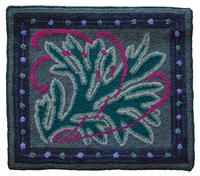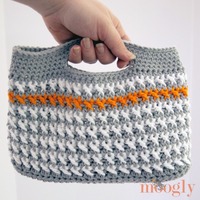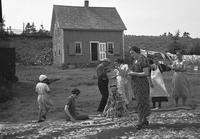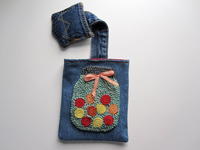Adapting Artwork
Art Nouveau: Elegant, stylized, sophisticated
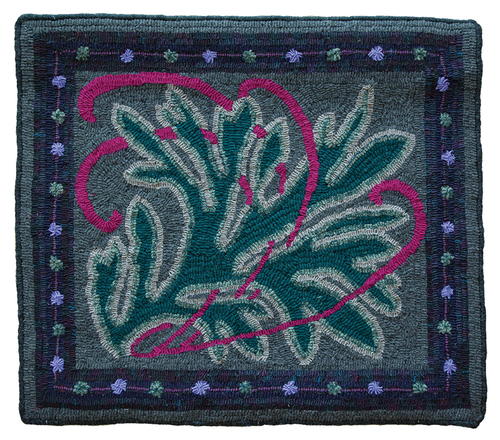
Seaweed Scrolls, 22 1⁄2" x 20", #8-cut recycled wool on linen. Adapted from a design by Henry de Waroquiet and hooked by Nadine Flagel, Vancouver, British Columbia, Canada, 2004.
I used a basic grid transfer, dividing the original square design into sixteen 4" squares, and then dividing the rug backing into sixteen rectangles in a 4 x 4 configuration. When I transferred the markings over, I stretched them over the rectangles. Presto: a square design became a welcome mat-sized rectangular rug. After I finished hooking the central design, I added a border to contain, balance, and unify the rather strident colors in the focal point.
When I taught myself to hook rugs in the days before the Internet, I learned through reading a few elderly books on rug hooking from the public library. Once I had mastered straight lines, I looked around for something less geometric, more pictorial, more challenging. Here the library books were not much help, as they presented the two traditional forms of rug hooking, neither of which appealed to my sensibility: either you could do precision dyeing to obtain 8-value swatches for realistic roses and animals in #3-cut wool, or you could use a chunky #8 cut for folk, or primitive, designs. Although I admired the vision and skill of practitioners in both areas, I knew that I was neither a folk artist nor a detailed realist. At the same time, I didn’t have the artistic training or confidence to create my own designs.
Just at this time, through a trip to Paris, I serendipitously entered the world of Art Nouveau. Not only the famous frames of the Metro but also every second doorway in Paris was an asymmetrical yet harmonious introduction to the decorative arts. Then, my university’s library contained a chance volume of Dekorative Vorbilder, a German annual publication containing a wealth of Jugenstil, or Art Nouveau, designs available for commercial applications. As a student of literature, my interests bridged the nineteenth and twentieth centuries, and I was particularly interested in modernity’s challenge to existing artistic visions. Like Modernism, Art Nouveau was a bridge between the two centuries. These two centuries seemed to me to be the most important for the development of rug hooking, too.
Nadine Flagel is a lifelong quilter and crafter, an avid reader and English literature instructor, an occasional writer, and a dilettante mother. From corners of her Vancouver dwelling she runs a virtual studio called Pretext Studio. You can view more work and purchase patterns and as-is wool at pretextstudio.com.
This article excerpt is from the September/October 2016 issue. For more information on our issues, check out our issues page.


